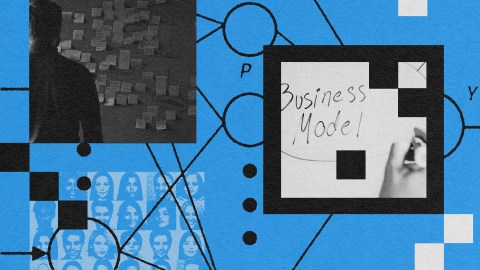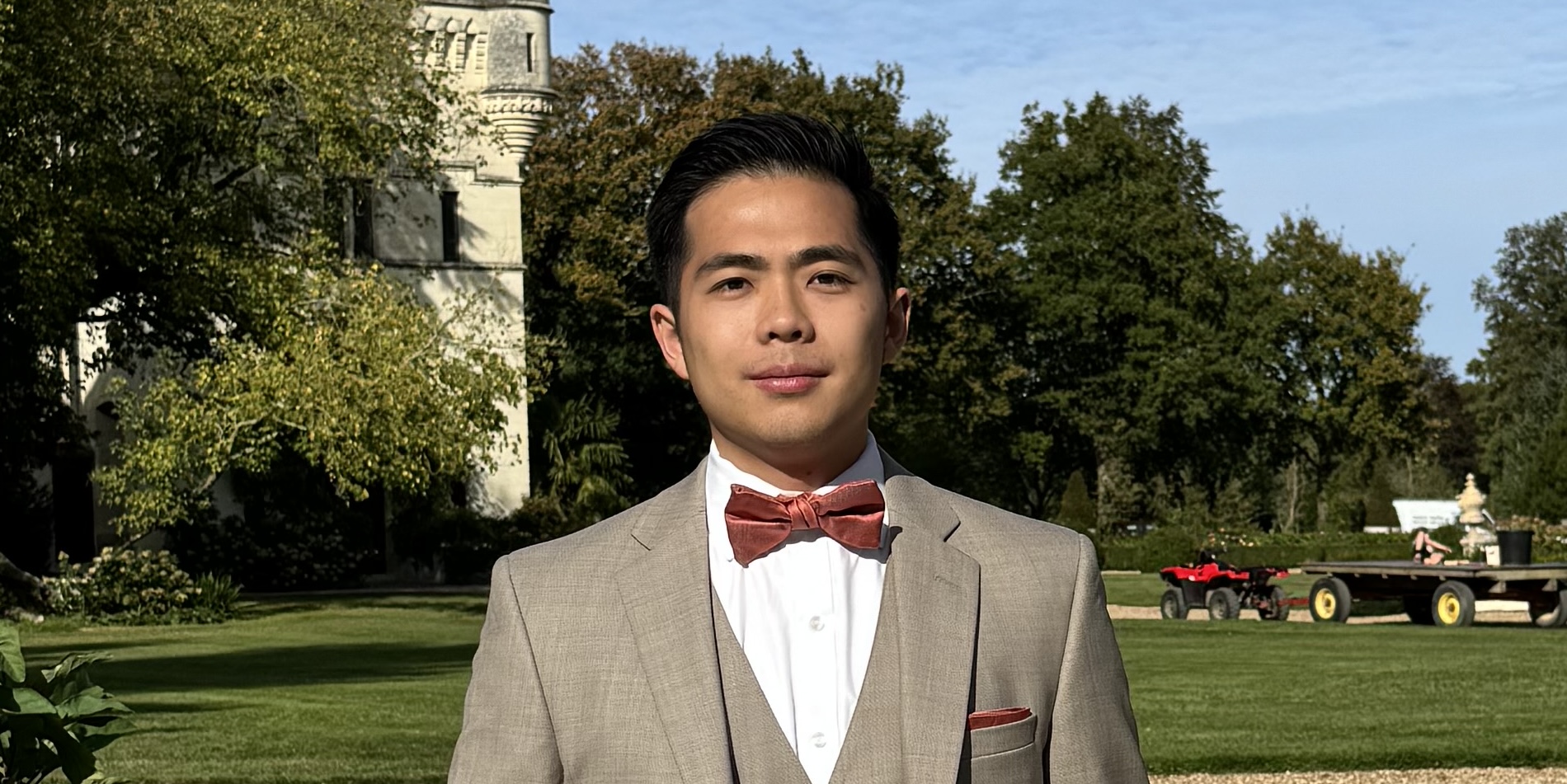Anatomy of an AI startup: Key lessons for first-time founders

- Launching any tech startup is risky, but launching in the AI space presents a particular kind of challenge for founders.
- Aragon AI CEO Wesley Tian outlines challenges he faced — and the wins he notched up — at each stage of the startup process.
- Accepted Silicon Valley wisdom positions distribution as more important than product.
Excitement about the potential of the latest AI technology has spawned a multitude of startups across the world. They’re seizing the opportunity to build products that simply weren’t possible just over a year ago. The instant impact of OpenAI’s ChatGPT, which launched last November, prompted tech companies that had been developing similar AI behind the scenes for years to push it out into the world.
Launching any kind of tech startup is risky, but launching in the AI space now presents a particular kind of challenge for founders. Competition for users and investment is fierce. There are many companies with overlapping products at a time when the economic conditions lead tech investors to be less liberal with their cash than they once were.
Wesley Tian is CEO of Aragon AI, a San Francisco-based startup using AI to generate professional-grade headshots for users looking to up their game on LinkedIn or in the job market. Tian developed an interest in artificial intelligence while at college and was on a path to doing a PhD in machine learning. But, jaded by academia, he was drawn to the world of startups as a way of putting what he had learned into practice
To explore how an AI startup gets off the ground in a fast-moving market, Big Think asked Tian to explain how Aragon AI went from an idea to a product with a growing user base.
1. The spark
Big Think: Tell us about the origins of Aragon AI.
Wesley Tian: Last summer we stumbled across a research paper about latent diffusion models, a technology that allows you to create really high-quality images just from a text prompt. I had played with the previous generation of this model in college and the difference was just stunning. Now you could create so much more, and it was so much more realistic, and powerful.
So we were thinking, if you can create an image of anything you can imagine, you could give everyone the ability to create high-quality art, photographs, graphic designs, and logos. You could create extremely hyper-personalized advertisements and marketing material.
I thought this was a huge business opportunity and I thought the timing was perfect, so I quit my job. It was the opportunity of a lifetime.
I started building a bunch of products. The first product we built was a tool that allows anybody to create high-quality logos and graphic designs. Later, we built a marketplace of different AI image tools. We iterated a lot and eventually stumbled across professional headshots.
A new paper came out around last fall, which allowed you to teach an AI model a certain style or certain concept. You can teach it what you look like just by giving it some images of yourself. That opened up a lot of possibilities.
Portrait photography is very time consuming and costly for a lot of people. It’s very labor-intensive and very expensive. We thought if we could create it with AI, that would really simplify the process and make it so much more affordable for a lot of people.
A new paper came out around last fall, which allowed you to teach an AI model a certain style or certain concept. You can teach it what you look like just by giving it some images of yourself. That opened up a lot of possibilities. You could try out different hairstyles, you could try different clothes, you could create different avatars of yourself. There have been new, improved papers that have come out, though — we’re not just using the code solely from that paper anymore.
We launched a very similar [avatar] product to Lensa before they launched and we had a bunch of different styles. You could create an image of yourself like you were a medieval warrior, or an anime character. One of the packs was a professional headshot pack, and a lot of our users only purchased that pack. That was the key customer insight, that the perceived value of this pack was much higher.
So that led us to launching a product that just delivered high-quality professional headshots. It makes a lot of sense that it’s been doing so well because it is a very practical use case. A lot of people want a better LinkedIn photo or a better photo when they apply to jobs.
2. The refinement
Big Think: Once you decided on an AI product, what were the next steps?
Wesley Tian: Early on, a lot of things were quite unclear. But as we started building, and started talking to more people, we started discovering a lot of new use cases. For instance, this is a pretty big need for businesses. Some businesses want to have their employees be an extension of their brand via branded headshots. Another category realizes their business performs better if their sales reps have better pictures.
People care a lot about how people look in person, and that’s true online too. People choose therapists, or physicians, or gig workers based on the quality of their picture. If they see someone with a very low-quality headshot, they’re less likely to work with them, and so that improves the conversion and revenue for these businesses.
Another use case is wedding photography. What we’re doing here is we’re acting like a photography lab and we’re trying to be able to create an image of anyone you know, in any outfit and any style, any pose, any format, and make it indistinguishable from real photographs.
And then creating ads and marketing campaigns with just AI can save people a lot of time and a lot of money. It’s been interesting to see all this inbound demand and these use cases as we’ve started to grow.

3. The acceleration
Big Think: Talk us through your decision to join a startup accelerator.
Wesley Tian: We were thinking about just raising a seed round but decided to go through an accelerator program to help us raise at a higher valuation. Having a network, and being able to build alongside other folks was a great experience. It just makes the journey so much more fun.
We had an offer from Y Combinator but decided to go with a program called Neo. Y Combinator has a lot of advantages over Neo, like its brand, and its prestige — and its network is massive. But Neo has a very tight-knit community. And they have a lot of events where they invite all their community members together and you’re able to have a very intimate conversation with their investors and with other portfolio company founders.
And they have a retreat, where you get flown off to Oregon for a month and you get to spend a lot of quality time with Neo mentors and partners, as well as other founders in your batch. And so that was a really unique opportunity for me.
4. The go-to-market strategy
Big Think: What kinds of tactics did you adopt when the time came to build a customer base?
Wesley Tian: Early on, our go-to-market strategy was quite unclear as I have an engineering background and my co-founder is also an engineer. I was doing everything I could think of. I was on [tech career community] Blind and commenting ‘are you looking for a new job?’ I was going on sites where people were talking about being laid off and saying ‘we have a promotion if you want to create some professional headshots.’ I was on Reddit. I was on Tinder in case people wanted a better picture for dating.
What ended up working out really well was we started an affiliate marketing program. Anyone could create a link that would redirect to our site. If they shared it with people and if it led to sales, we would give them a 20% cut of all the profit that we generated.
I started doing some content marketing on Twitter and LinkedIn, just posting about how you could create AI-generated headshots without wasting time going to a photo studio and paying a lot of money. And people just started promoting us for free, because they would get a cut. That was a very low-risk way that snowballed, and led us to ranking extremely high on Google for ‘AI headshots.’ It snowballed from the content marketing and the affiliate marketing program. Today we get a lot of our traffic from SEO as well as word of mouth and we are also experimenting with paid [ads].
What ended up working out really well was we started an affiliate marketing program. Anyone could create a link that would redirect to our site. If they shared it with people and if it led to sales, we would give them a 20% cut of all the profit that we generated.
5. The competition
Big Think: The AI headshot space is getting crowded — how are you handling the competition?
Wesley Tian: People who have been in Silicon Valley for a while think distribution is more important than product. Justin Kan, the co-founder of Twitch, said “First-time founders are obsessed with product, second-time founders are obsessed with distribution.”
Product is something that you need to build out early on, but a lot of the time you’re going to have a lot of competing products, and the barrier to building a great product is not that high, because there are so many engineers and smart people.
What is very hard to do is build that distribution. And distribution also serves as a moat. We have an AI headshots product, but every day there are new competitors popping up. We defend our market share with partnerships, affiliates, and our search engine ranking. Big companies could compete, but they’re very slow to launch new products. We’ve seen this with past tech cycles where startups build super quickly and big companies try to adapt but just aren’t able to keep up.
6. The future
Big Think: How do you plan to scale?
Wesley Tian: We have around 200,000 users, growing every day, and we’re working on a few new products. One of them is taking a B2B angle. We have a self-serve B2B product right now, and we’re in the process of closing a few deals with larger companies as well. We’re focusing on growth and we’re hiring, trying to find some great designers, machine learning engineers, some people to help with marketing. We’re at the scaling phase and launching new products while we’re at it.




